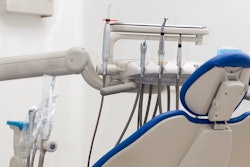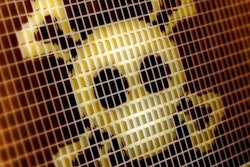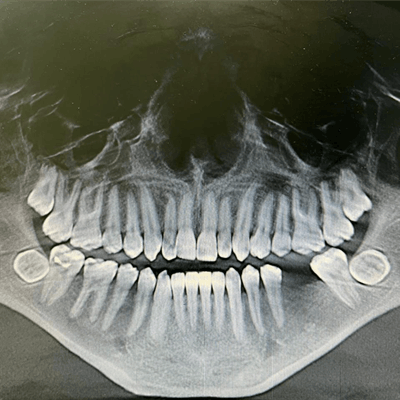
Clinicians examining a routine dental x-ray discovered a 20-year-old man had rare, identical bilateral horizontally impacted lower molars. Details of the case were published in the Cureus Journal of Medical Science.
Early detection led to the man having his molars pulled, avoiding serious future complications, the authors wrote.
"In dental practice, clinicians encounter various types of impaction of teeth, among which symmetrical horizontal impacted bilateral lower third molar in lingo-buccal direction is a rare type of impaction," wrote the group, led by Shaul Hameed Kolarkodi from Qassim University in Saudi Arabia (Cureus, December 31, 2021).
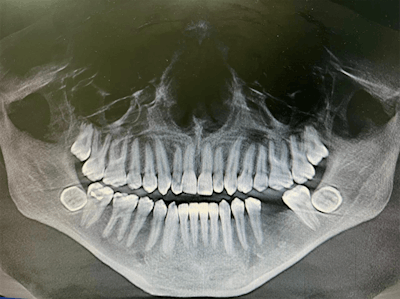 Panoramic screening radiograph shows bilateral impacted mandibular third molars. All images courtesy of Kolarkodi et al. Licensed by CC BY 4.0
Panoramic screening radiograph shows bilateral impacted mandibular third molars. All images courtesy of Kolarkodi et al. Licensed by CC BY 4.0Mandibular and maxillary third molars are the most commonly impacted teeth, the authors noted. Impaction can occur due to a lack of space or a pathological change that may disrupt the typical eruption of the teeth. The impacted molars may remain undetected because they are often asymptomatic.
Bilateral symmetrical impactions are rarely reported, according to the authors. Especially rare are symmetrical linguoverted impacted bilateral lower third molars, which are horizontal impactions that orient in the buccolingual direction with a crown overlapping the root.
In the case report, the authors described how during the man's routine dental visit, bilateral impacted mandibular third molars were identified on a panoramic dental x-ray. The molars were transverse in the linguobuccal direction. A cone-beam computed tomography (CBCT) scan confirmed the molars were positioned in a linguobuccal direction on both sides, with thinning on the lingual cortical plates. No pathological findings were associated with the molars, the authors wrote.
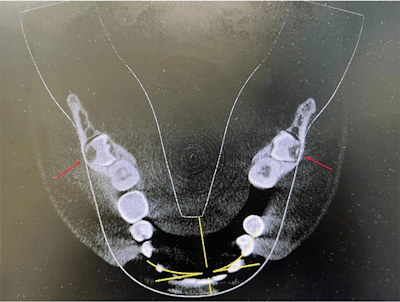 Axial CBCT shows incompletely formed roots and the impacted teeth horizontally situated in linguobuccal direction.
Axial CBCT shows incompletely formed roots and the impacted teeth horizontally situated in linguobuccal direction.Detailed evaluation of the CBCT results indicated the roots of the impacted teeth were not completely formed, and there was idiopathic osteosclerosis in the second premolar region, they wrote.
Following discussions with the clinician, the patient was referred to an oral and maxillofacial surgical center to have the impacted teeth extracted.
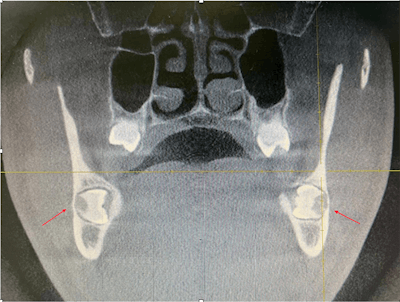 Sagittal CBCT shows the bilateral symmetrically impacted teeth.
Sagittal CBCT shows the bilateral symmetrically impacted teeth.Because an impacted tooth can cause problems down the line, including increasing a person's risk of dentigerous cysts, extraction is often the best treatment option. Also, postoperative complications increase with patient age; therefore, extractions should be done before the age of 25, if possible.
"We highly recommend surgical removal of both impacted teeth at either side of the mandible in order to avoid late complications," the authors concluded.





